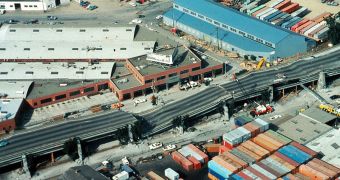Researchers with the Seismology Laboratory at the University of California in Berkeley (UCB), led by director Richard Allen, say that the West Coast of the United States would benefit immensely from the deployment of an early earthquake warning system similar to the one used in Japan.
Allen says that such a system would help minimize the potentially disastrous consequences of the tremors like the 1989 Loma Prieta magnitude 6.9 earthquake, which killed 63, and injured nearly 4,000. If the San Francisco Bay Area had been warned at least a short time in advance, the loss of life would have been minimized.
In theory, a properly-set-up system would provide an early warning time ranging from a few seconds to a few minutes. In practice, the best-case scenario for the geologically active West Coast would be a 1-minute warning before the shock waves hit. Even that can prove invaluable for saving lives.
A similar system installed in Japan proves that the approach works. The Asian nation boasts over 1,000 seismometers installed throughout the country, which provide real-time earthquake data to the public and to businesses, in case of an emergency, Nature reports.
The Japanese “have a network of seismometers – about a thousand of them across the country – that detects earthquakes as they are happening. They locate the earthquake, and they estimate the amount of shaking that you might expect,” Allen explains.
The expert adds that his group developed the prototype of a similar system for California, but says that federal and local authorities have yet to show any interest in funding it, or otherwise assisting in its development. Without money, it is nearly impossible to further refine this critical asset.
In Japan, the early-warning system sends out messages to the population via a wide array of communications channels, including cellphones and TV broadcasts. This enables high-speed trains to stop in their tracks, allows surgeons to step away from patients and regular people to take shelter.
If Allen's system had been available in 1989, then people living in Berkeley, for example, would have had around 21 seconds of warning before the shock waves hit. The epicenter for the Loma Prieta tremor was located around 100 kilometers (60 miles) away from the city, NPR reports.
“The best-case scenario in California is about a minute of warning. In the Pacific Northwest, you can get up to five minutes of warning. The really big earthquakes can give you a significant amount of warning, and that's when you would most want it,” Allen concludes.

 14 DAY TRIAL //
14 DAY TRIAL //